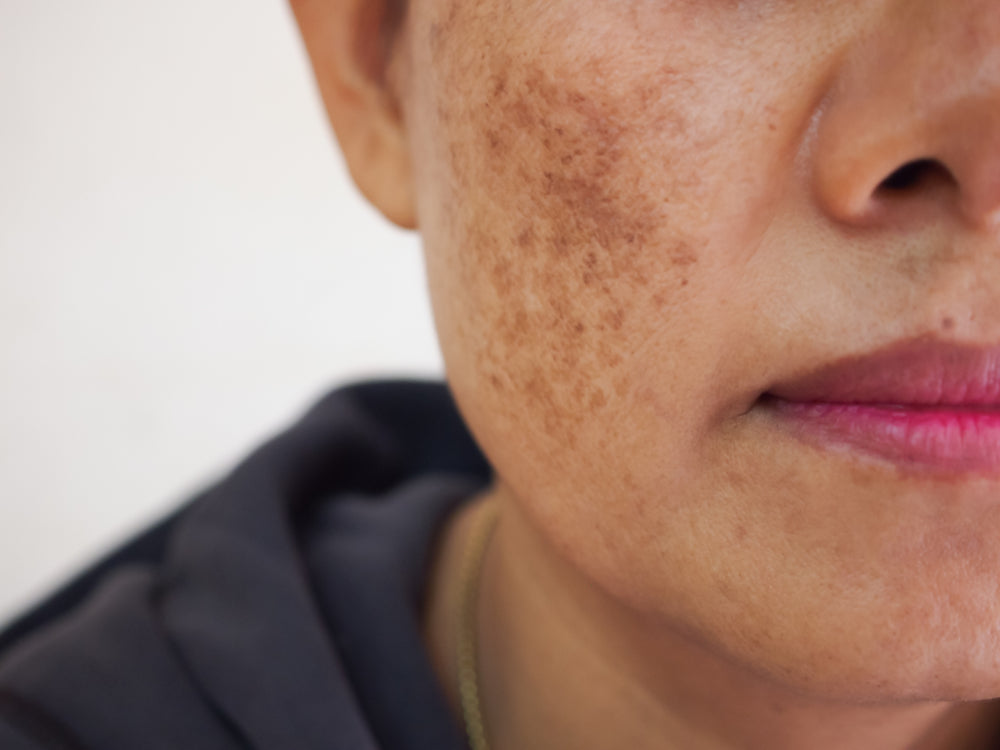What is Melasma? What are the causes? Can it be treated long term?
The good news is yes. However, we have to make sure that we tick a couple of boxes before achieving the long term result.
Melasma is a hormonal form of pigmentation generally driven through pregnancy or breastfeeding after pregnancy, the contraceptive pill or sometimes even menopause.
Melasma can present as coffee staining on the skin or patches on the forehead, cheekbones, top of the lip or down the sides of the face. Melasma is a form of pigmentation that sits in the deeper layer after the top layer of our skin. This pigmentation does not surface unless you are exposing it to UV. So that is why it does not show in winter but comes in the summer with UV.
We need to make sure you have stopped manufacturing the pigment through hormonal drives such as pregnancy, breastfeeding or the contraceptive pill. Any of these can drive pigmentation.
Some treatments can remove the melasma laser (not everyone is a candidate for laser) or chemical peels (which I do not advise). We need to break down the pigmentation in the deeper layers of the skin, or it will keep resurfacing.
Other skin treatments on the market will assist with your darker skin tones to make it safer to remove the melasma.
So unless you are successful in removing the melasma, you have to break down the pigment and clear it from the deeper layers.
Topical serum (which can take up to 12 months) can assist as it penetrates the deeper layers of the skin to remove the melasma. Then the melasma will not resurface again. That is how you can be successful in removing melasma.
If you have had your melasma removed by a dermatologist or beauty therapist and it has returned, you have probably gone down the path of treatment such as chemical peels which makes you photosensitive to UV and prone to drawing that melasma to the surface of the skin.
Or the melasma has been removed and has not broken down. When you go to a skincare professional, a skin analysis machine can monitor what is underneath the layers of the top layers and see if the deposit is still there, so they can manage it. Then watch your progress and see that the pigment has completely broken down and cleared away.

